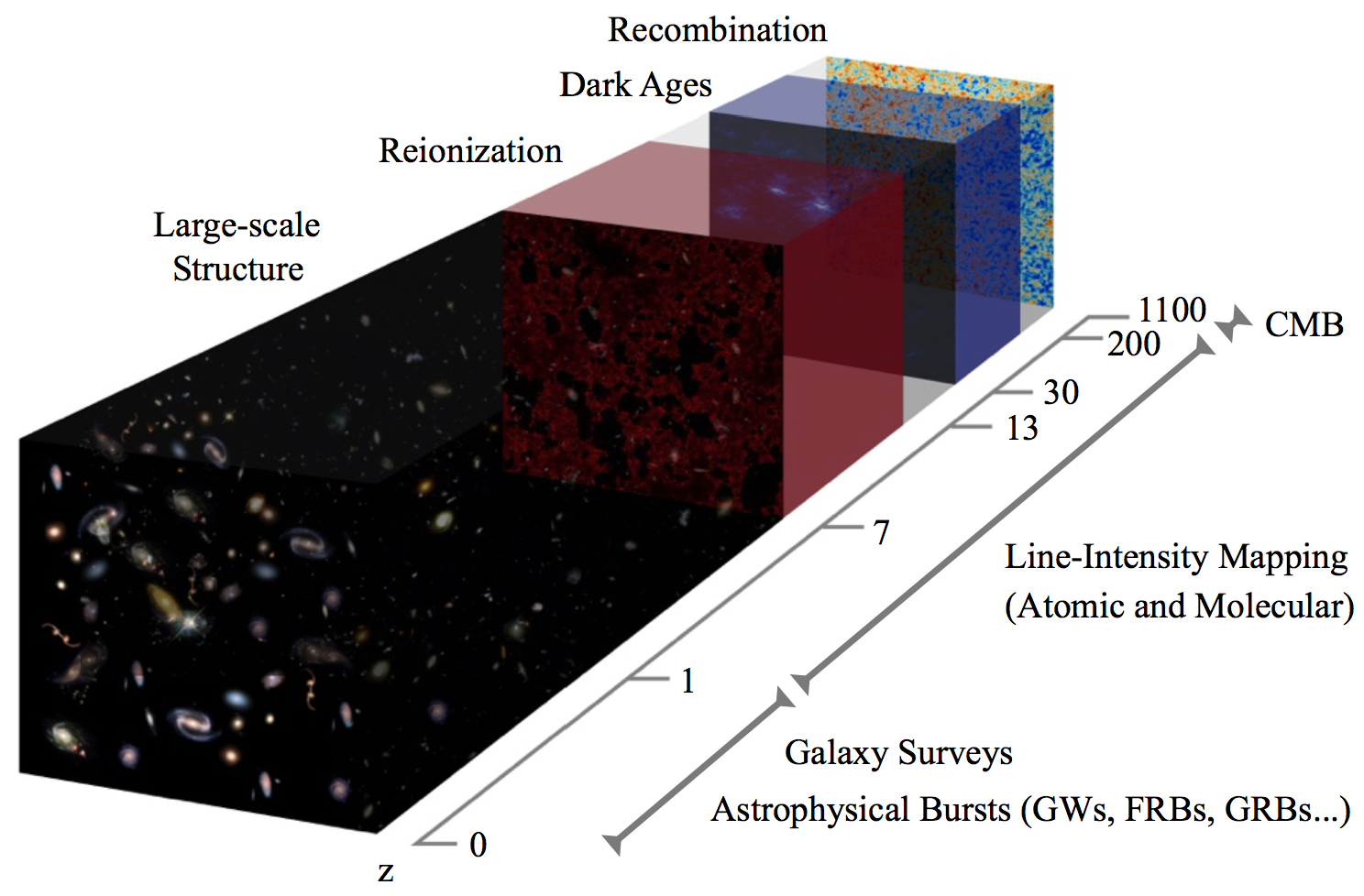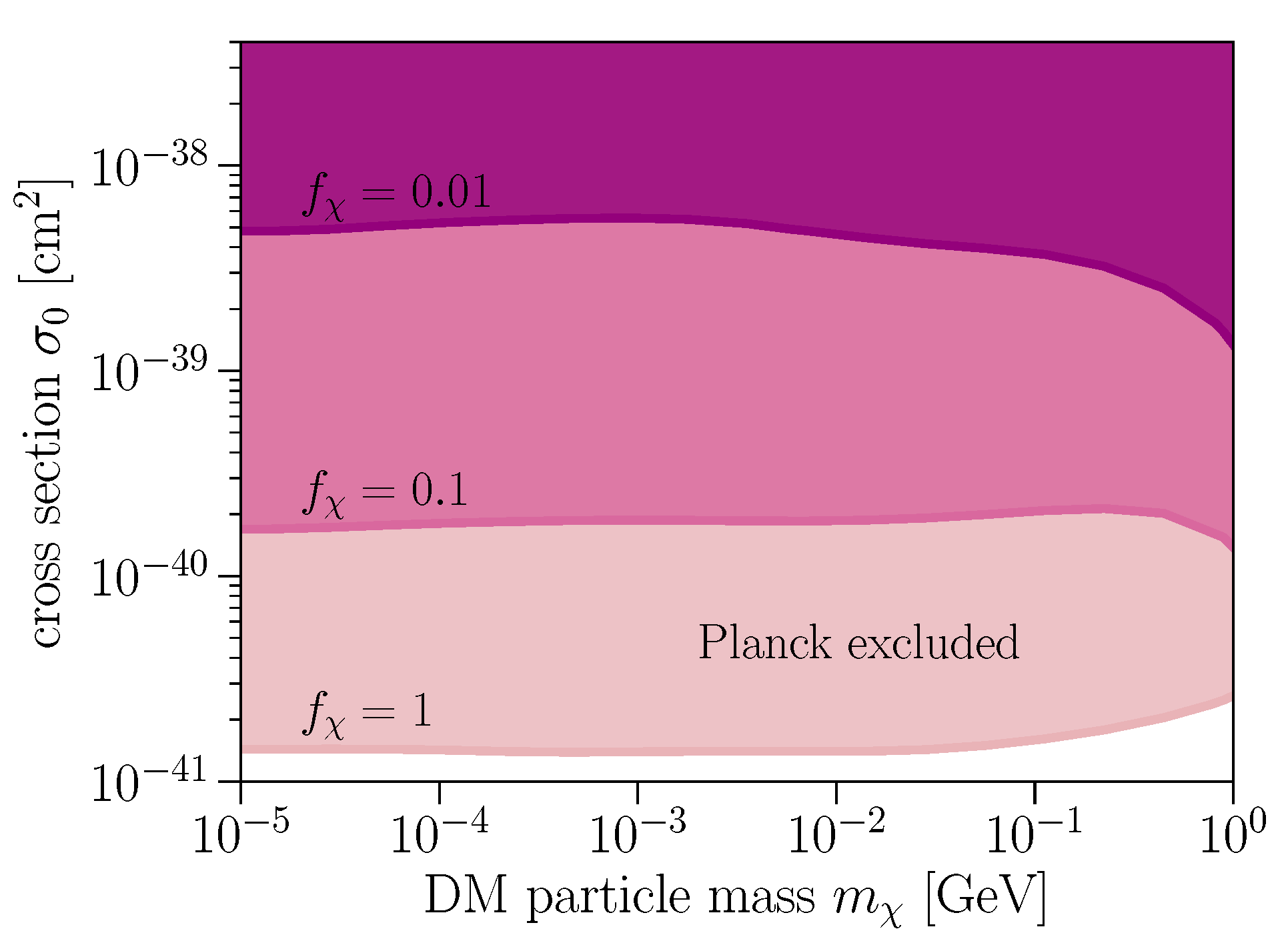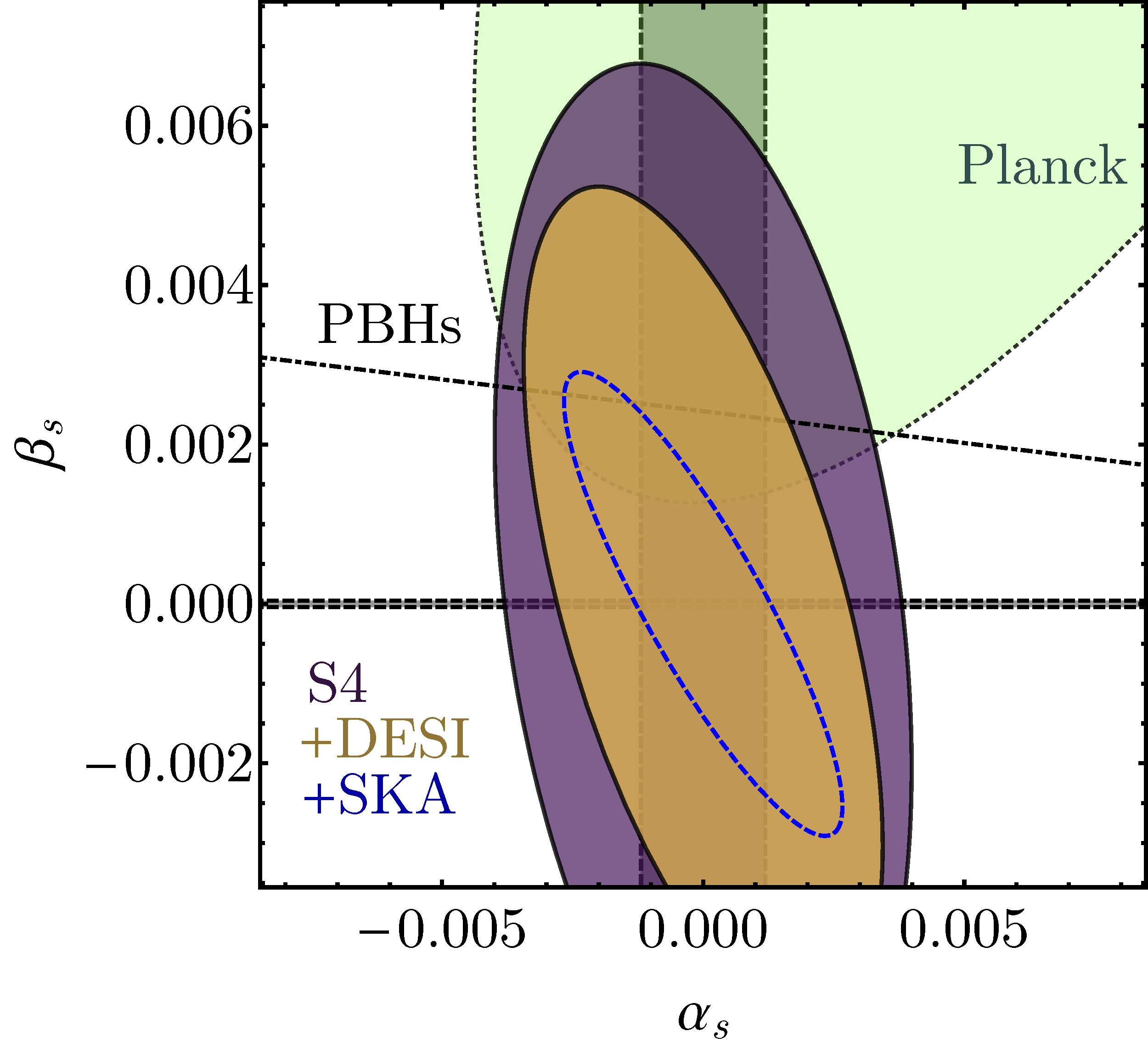Research

The Observable Universe: probes of different epochs in its history.
Opening Up New Windows to Study the Universe
The Standard Model of Cosmology aims to explains
the cosmic evolution from a fraction of a second
after the Big-Bang singularity to the current period
of accelerated expansion with only a handful of
parameters. Over the past decade, it has withstood a
wide series of observational tests. Yet several
gaping holes remain in the theory:
- How did inflation begin and come to an end?
- What makes up the dark matter in the Universe?
- What is the nature of dark energy?
- How did galaxies and clusters of galaxies form and
evolve to make up the large scale structure we
observe today?
Going forward, we must develop new ways to probe
these fundamental questions by accessing the full
volume of the observable Universe. This is the focus
of my research.
The Cosmic Microwave Background: Exploring the Early Universe
Why am I interested?
The Cosmic Microwave Background
My interest in the CMB has been focused on cosmological Inflation, our best theoretical framework to explain why the Universe is flat, homogenous and isotropic, and most importantly how tiny quantum fluctuations are imprinted onto cosmic scales to provide primordial seeds for structure formation. The anisotropies in the CMB temperature can be used to test inflationary scenarios in various ways. Above all, the curl component (or B-mode) of the CMB polarization, a unique imprint of inflationary tensor fluctuations (or primordial gravitational waves), is a key prediction of many models of Inflation and is widely considered the holy grail of cosmology, as I reviewed in Kamionkowski and Kovetz (ARAA, 2016).
With J. Munoz and colleagues, we laid out a novel second-order estimator of compensated isocurvature perturbations (Munoz et al. 2016) and investigated how well the running of the spectral index can be constrained (Munoz, Kovetz et al. 2017). Recently, with colleagues at JHU, IAS and Tel-Aviv, We performed an improved CMB analysis to search for dark matter–baryon scattering with a Rutherford cross section (a velocity dependence of v^-4) corresponding to a Coulomb-type interaction. In particular, we developed a new and robust prescription for incorporating the relative bulk velocity between the dark matter and baryon fluids into the standard linear Boltzmann calculation. Using an iterative procedure, we self-consistently include the effects of the bulk velocities in a cosmology in which dark matter interacts with baryons. Furthermore, we investigated how these constraints change when only a subcomponent of dark matter is interacting, with important implications for the dark-matter explanation of the recent anomalous 21cm absorption profile detected by the EDGES experiment at z~17.


Left: The 95% C.L. excluded region for the coefficient of the DM–proton momentum-transfer cross section as a function of DM mass, obtained by analyzing Planck 2015 data, when the interacting fraction fχ of the total DM energy density is fixed to (from the lightest to the darkest pink): 1, 0.1, and 0.01. From Boddy, Gluscevic, Poulin, Kovetz, Kamionkowski and Barkana (PRD, 2018).
Right: 68% confidence ellipses in the αs − βs plane for the S4 CMB experiment (purple), S4+DESI (yellow), and S4+SKA (blue). We show the current Planck constraint in green. In gray we plot the range predicted by slow-roll single-field inflation. The region above the dash-dotted black line could produce PBHs with masses Mpbh > 1e15 gr, if extrapolated to the smallest scales. From Munoz, Kovetz, Raccanelli, Kamionkowski and Silk (JCAP, 2017).
Observation
An alternative approach to locating low-contamination sky patches beforehand is to develop means to identify the presence of Galactic dust contamination in CMB maps after they are generated. I introduced a unique such tool which uses tailored estimators to detect statistical anisotropy of the polarization orientation due to the large-scale coherence of the Galactic magnetic field.

- Harvard ITC (invited,
2013): "Cosmic Bandits: Exploration versus
Exploitation in Cosmological Surveys”
(talks on this also given at Caltech/OBSCOS, CWRU, Columbia, NYU, Berkeley LBNL, JHU, CITA, IAS/Princeton) - Institut
d'Astrophysique, Paris (invited, 2015): "Dealing with Dust Foregrounds in CMB
B-mode Observations"
- Kamionkowski and Kovetz,
PRL (2014): "Statistical Diagnostics to Identify
Galactic Foregrounds in B-mode Map"
- Kovetz and Kamionkowski,
New Astronomy (2015): "Cosmic Bandits: Exploration versus
Exploitation in CMB B-Mode Experiments"
- Kovetz and Kamionkowski,
PRD Rapid Comm. (2015): "Strategy to Minimize Dust
Foregrounds in B-mode Searches"
Collaborations
- N. Abazajian et al.
(2016): "CMB-S4 Science Book, First Edition”
- F. Finelli et al. (2017): "Exploring Cosmic Origins with CORE: Inflation”
